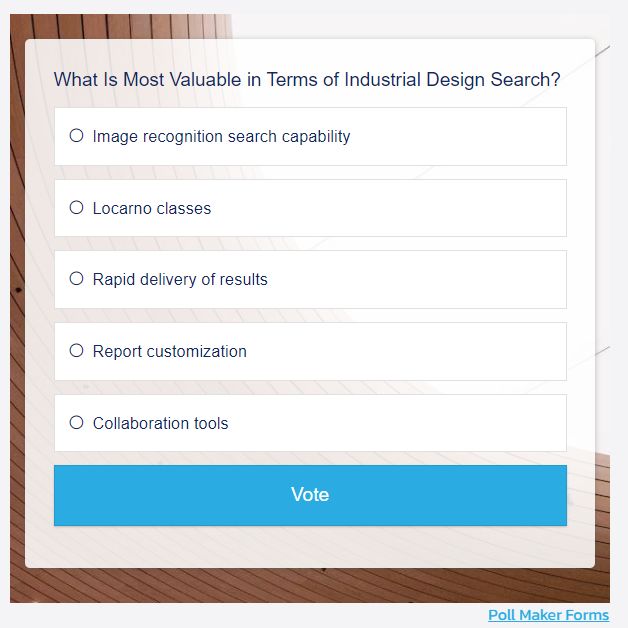At this year's INTA Annual Meeting, Questel's Marie Farges joined a panel of IP experts to discuss product design clearance and search strategies, including practical application of artificial intelligence (AI) in industrial design search tools. Here, we summarize the content of her presentation, which provided practical advice on making the most of the latest technology.
Do-it-yourself industrial design search is easier than ever before, thanks to innovative software-as-a-service (SaaS) search tools. From database selection to AI, the latest technology can streamline the product design clearance process, as Questel's Marie Farges presented, alongside a panel of distinguished IP experts (pictured below), in the 'Product Design Clearance and Search Strategies' educational session at INTA 2024 in Chicago this May.
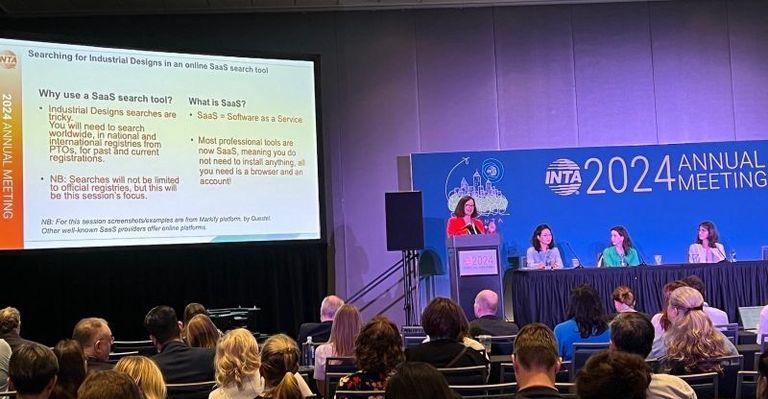
Global industrial design search projects are notoriously difficult, as they require organizations to search in multiple sources for past and current registrations. As national and international registries can provide only part of the picture, searches must also be conducted in additional online and offline sources, including web content.
Do-it-yourself search tools, such as our Markify ProSearch" and Markify Comprehensive Search tools, provide organizations with the ability to not only run such searches more effectively but also to do so directly from their internet browsers.
As our search platform, like most professional IP tools, is provided based on the SaaS model, clients do not have to install any programs or download any software. All they need to start is an account and an internet connection.
How to Run an Industrial Design Search in an Online SaaS Tool: 5 Simple Steps to Success
- Step 1: Choose your database/coverage
Theoretically, because a design needs to be entirely novel, industrial design searches should be undertaken on a worldwide basis. Depending on project importance, product value, or geographical market, you may need to focus on specific areas, however.
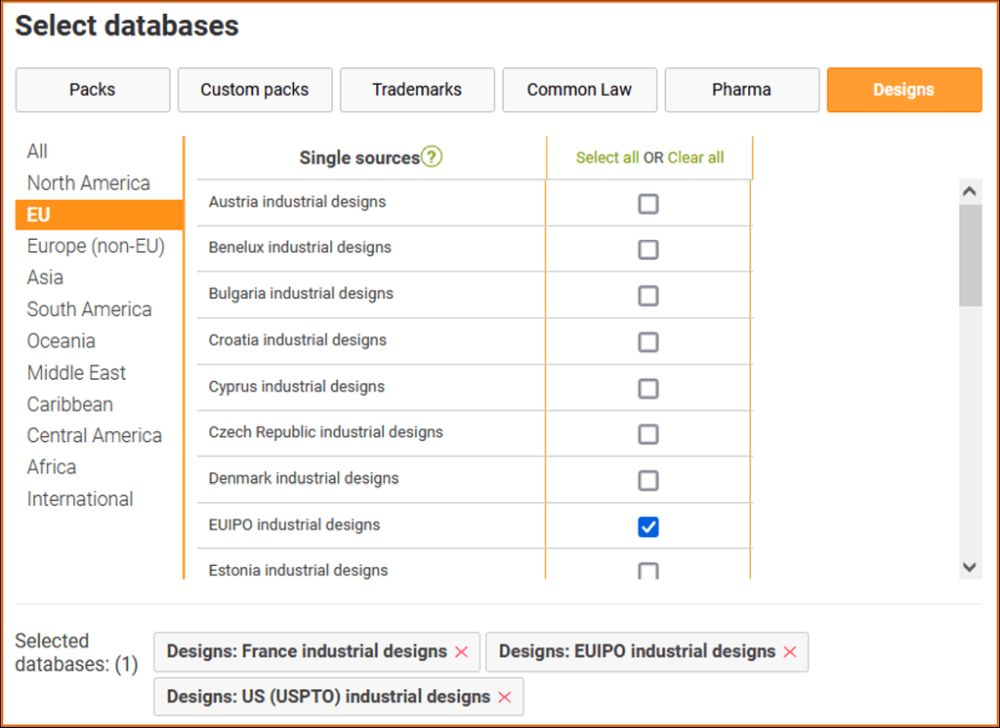
Example databases selection: By geographical zone or country-specific.
- Step 2: Create your search options
Most professional online tools will allow you to search by keyword(s), by owner or designer/inventor, and to restrict your search to specific classes and dates. However, it is also helpful to use a tool that enables you to search by image too.
Product designs often contain multiple views, so your industrial design search tool should either allow multiple searches in bulk and/or enable you to combine searches.
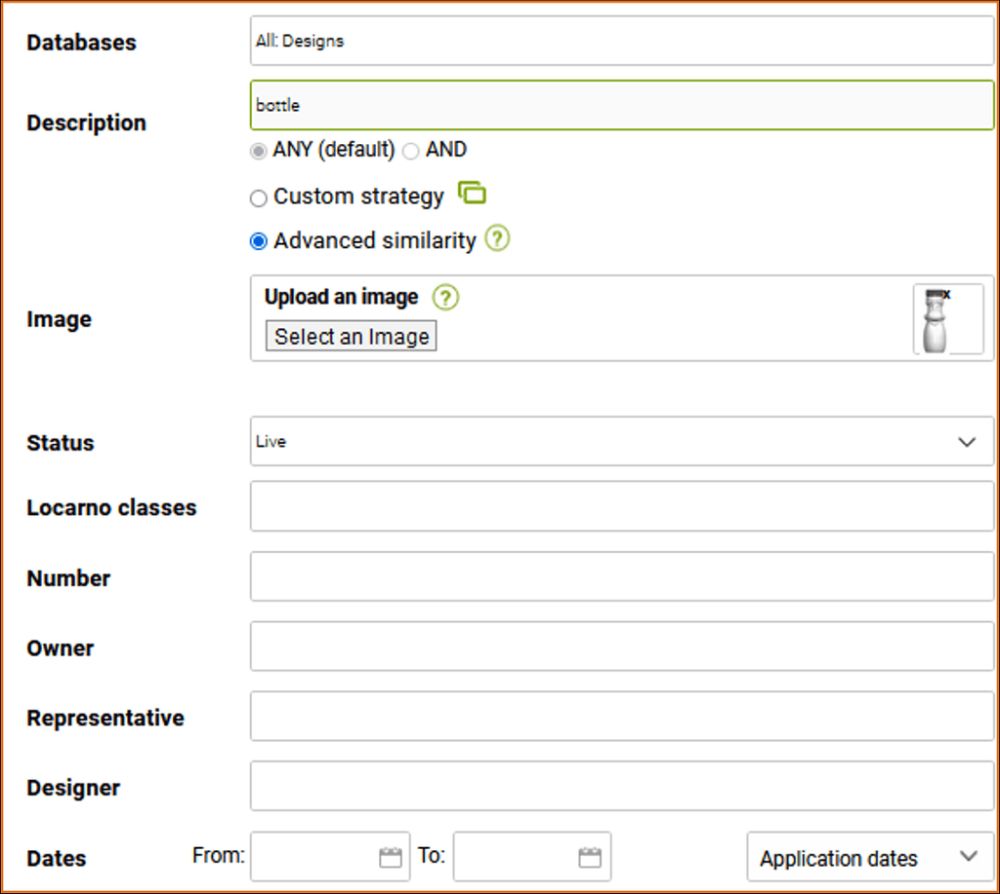
Example of search form fields (Markify ProSearch")
How AI Can Assist in Industrial Design Image Searches
When undertaking an industrial design search using images, the tricky part is often image recognition. However, this is also what most searchers need! Most image recognition tools will use AI to gather the most relevant results. At Questel, we train our AI model by feeding it with conflicting pairs, to improve sorting of results.
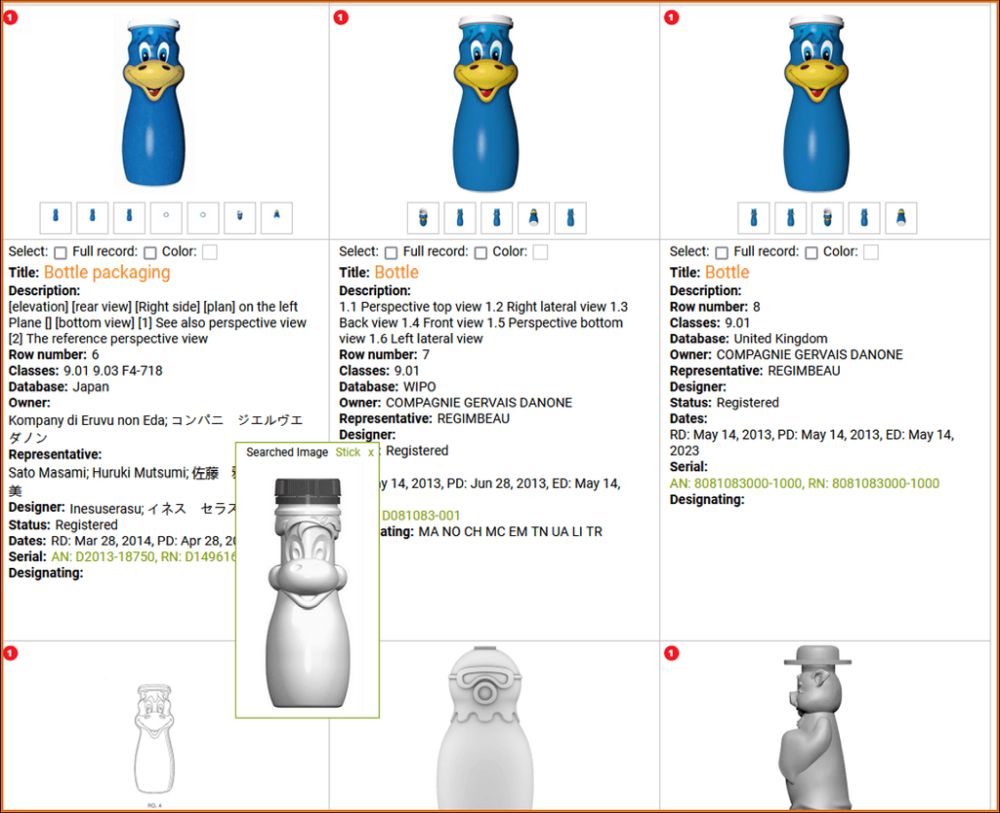
Image searches help searchers retrieve very relevant results that would be missed by keyword searches alone. The above figure shows an example of relevant results from an industrial design search, including the simplified drawing from the registration.
For comparison, in the example shown below, the keyword used was 'duck':

The results show one very relevant result (left), and one irrelevant one (right):
- The well-known Danone bottle is supposed to represent a dinosaur, and
- The second result is not visually very interesting
Algorithms are not 'fixed': they are trained and are constantly improving to remove the most 'noise' (irrelevant results) possible.
- Step 3: Review the results
Result review can be time-consuming, but filtering can help to save you time. Consider filtering by classes, keywords, jurisdictions, legal status, or dates. Customizing columns and image sizes will also reduce time spent.
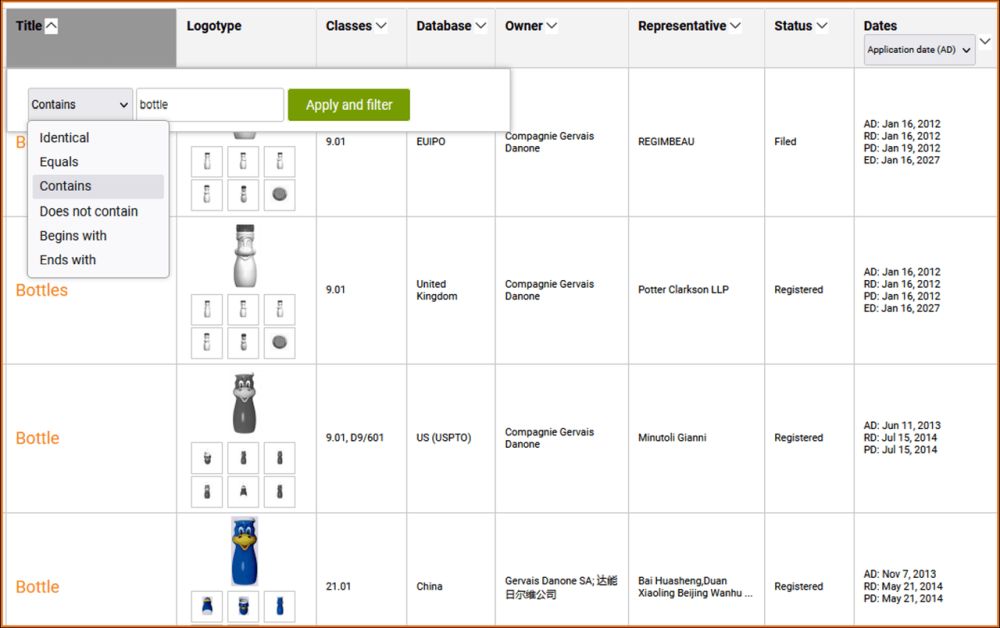
Example of filtering results by keyword present in title.
- Step 4: Check the data
To assess the risks strategically, you will want to establish the location of the main risks. Data accuracy is crucial whichever platform you use, as you need to be able to quickly check data (when possible) via the official online patent and trademark office (PTO) registry.
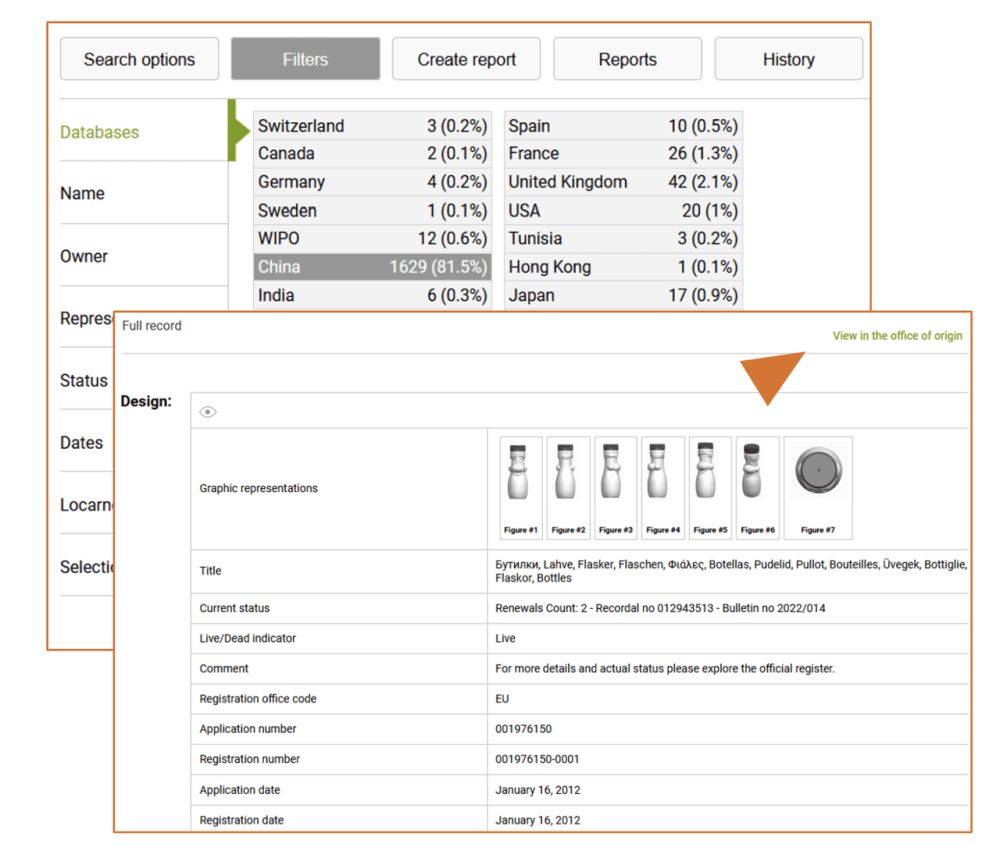
Example of filtering by jurisdiction & example of access to official PTO data.
- Step 5: Generate reports
After undertaking a complex search, it's important to be able to generate simple reports. Whether you work in-house or at a law firm, you need to be able to convey your legal opinion and estimate of risk in a way that your audience will quickly understand—and, ideally, in a customized template.
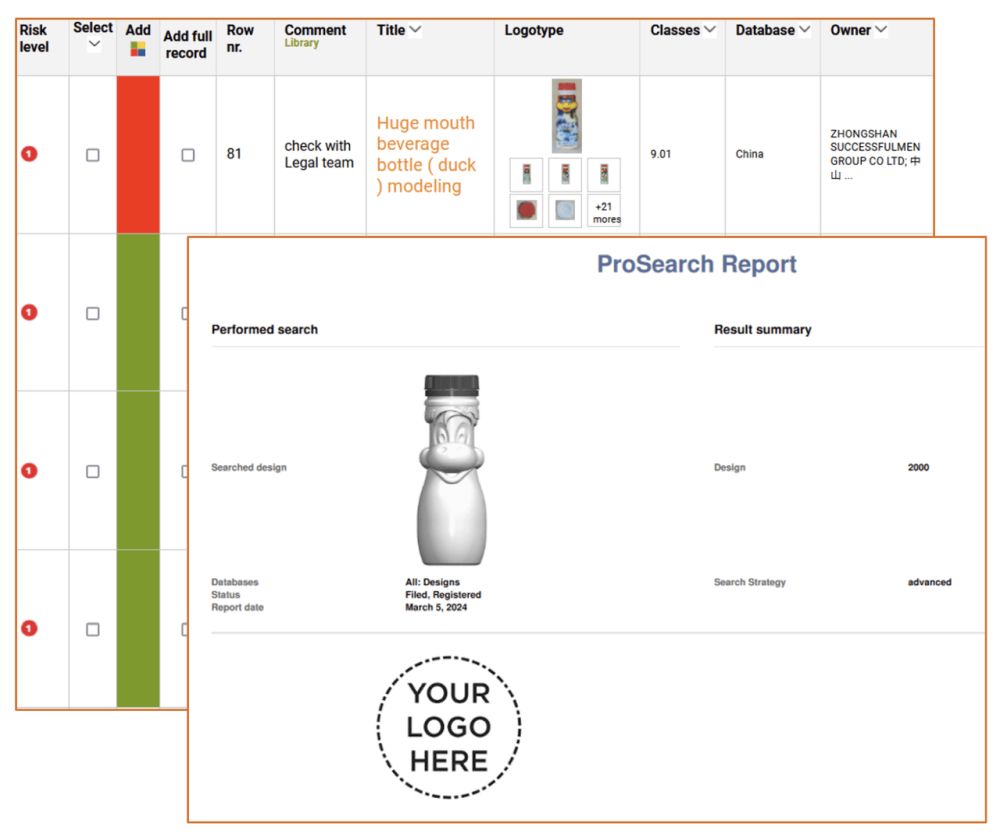
Example of results classified by risk levels with comment and example of a customized report.
What IP Searchers Tell Us About Industrial Design Search
At Questel, we routinely ask our clients, as IP experts, to share their feedback and strategic needs. From the perspective of industrial design search, efficient image search, report customization, and quick results were considered the most valuable to date.
Not surprisingly, image recognition emerged top of this wish list in our survey at INTA 2024:
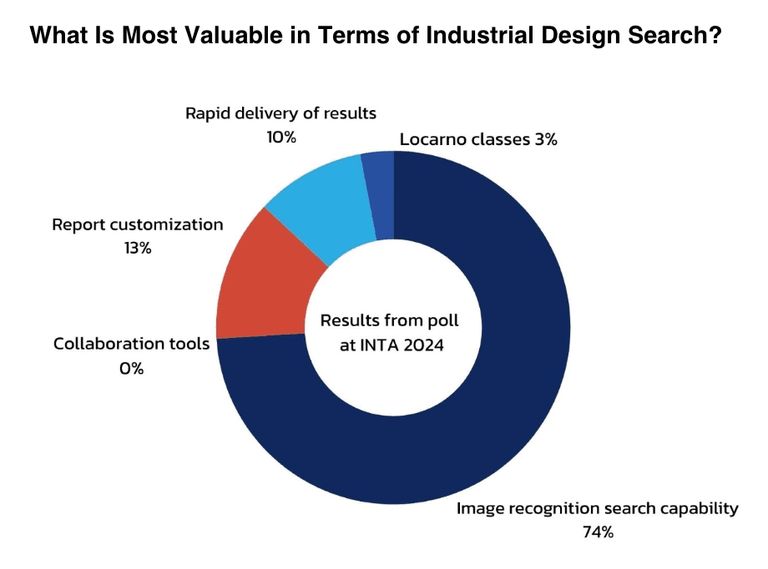
In addition, our clients share that they value: multiple view searching, legal status information, and an easy-to-use, welcoming interface.
Have your say!
Industrial Design Search: When to Do-it-Yourself and When to Bring in Expert Advice
Of course, online tools have their limits. That's why we firmly believe that the best approach is a combination of human expertise and efficient tools.
Expert knowledge is especially important when it comes to defining the scope of a search and analyzing the results of image searches:
- Looking outside the limits of official registries Your chosen search tool will provide you with a list of the main databases you should not miss, but what about searching paper magazines, catalogs, museum content, advertisement leaflets, etc.?
- Image searching Where should you draw the line when analyzing the results? When is a partially similar design not 'risky' anymore?
Industrial Design Search: Three Key Takeaways
1. Image searching is crucial but tricky—so, it's important to work with an efficient SaaS search tool or provider.
2. AI search tools are already advancing the capabilities of search technology—by working with them today, you can ensure they evolve and grow with you in the future.
3. Technology provides vital access to data and some of the answers—but human expertise is a non-optional factor in the success of any
The content of this article is intended to provide a general guide to the subject matter. Specialist advice should be sought about your specific circumstances.


